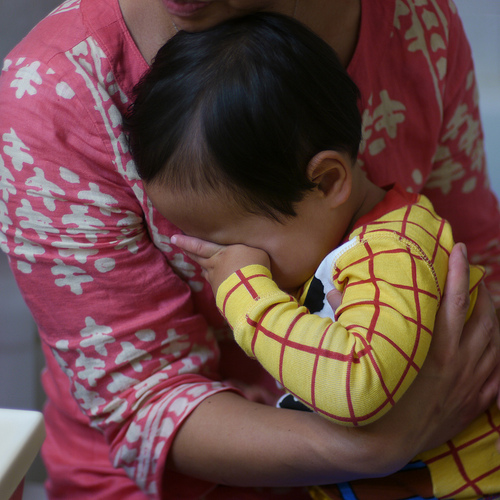I’m sure that you’ve noticed when you don’t sleep well, you’re cranky, short tempered, and not nearly as understanding as nights when you get sufficient sleep. For our children, you may find that they don’t listen as well, are more difficult, and more resistance to your requests. In a recent study conducted by UC Berkley, researchers found that a poor night of sleep led to increased animosity and conflict the following day.
So what does this mean for your children? We already know that a lack of sleep can cause behavioral issues, decreased attention span, and other problems…but I think that we often forget that poor sleep can lead to so much more. Temper tantrums, power struggles, and poor behavior are also signs of poor sleep habits.
Yes, these are also signs of a typical toddler or preschooler, but these behaviors become more prevalent when your child doesn’t sleep. Many parents notice that their child doesn’t even act like themself when they’re overtired. The solution? Make sure that your children get enough quality sleep every single day.
This may seem like a tall order, but really, if you follow these simple tips, you can help your child get enough sleep (and still have a little time for yourself before your bedtime, too!):
Follow a Flexible Schedule
By “flexible schedule”, I don’t mean that meals and bedtimes are all over the place, rather, that you keep meals and bedtimes in sync with each other. Breakfast is at 8:00 every morning. Nap is at 9:00. Lunch is at 11:00…and so on. A flexible schedule still leaves a little wiggle room for a shopping trip that gets you home a few minutes late. If there’s one thing that I stress it’s keeping naptimes and bedtimes on a strict schedule that only varies by a few minutes. If your child is well-rested and doesn’t fight sleep, you can have a bit more variance in actual times. Just make sure to watch for sleepy signs!
Make Sure That Your Child is Napping Well
Children younger than 4 years old need their naps. Yes, as your baby gets older and realizes that everyone else isn’t taking a nap, you’ll encounter some naptime resistance, but you need to persevere and stick to your guns about this one. Naps help recharge your baby’s batteries and ensure a pleasant day, rather than an overtired, whiney, out of control one.
What about those children who have outgrown naps? For preschoolers, quiet time is still necessary, about 30-45 minutes each day. Make sure that you give your child time to relax and process the day so far.
Keep an Age-Appropriate Bedtime
 If you’re unsure of what an appropriate bedtime is for your child, please take a moment to review my recommended baby and toddler sleep schedules (link). Many parents are surprised to find that their children’s bedtimes are quite a bit earlier than they thought. In fact, most children under the age of 9 years old should have a bedtime between 7:30 and 8:00 p.m.
If you’re unsure of what an appropriate bedtime is for your child, please take a moment to review my recommended baby and toddler sleep schedules (link). Many parents are surprised to find that their children’s bedtimes are quite a bit earlier than they thought. In fact, most children under the age of 9 years old should have a bedtime between 7:30 and 8:00 p.m.
To figure out your child’s ideal bedtime, make sure that you “do the math backwards”: if your child needs to be up at 7:00 a.m. to get ready for school, then count backwards to figure out when your child should be in bed, ASLEEP. For example, if your child needs 11hours of sleep and needs to be up at 7am then they need to be asleep by 8pm.
Get Plenty of Activity Each Day
In between meals and naps, make sure that your child is engaged. Do an art project, craft, or play a board game. Have a dance party. Play trains. Make sure that you are encouraging your child to be active and use their brain. Television isn’t necessarily the enemy, but it can impair sleep, so try to limit screen time and avoid screens altogether for an hour before sleep.
photo credits: emerille; mliu92 via photopin cc




